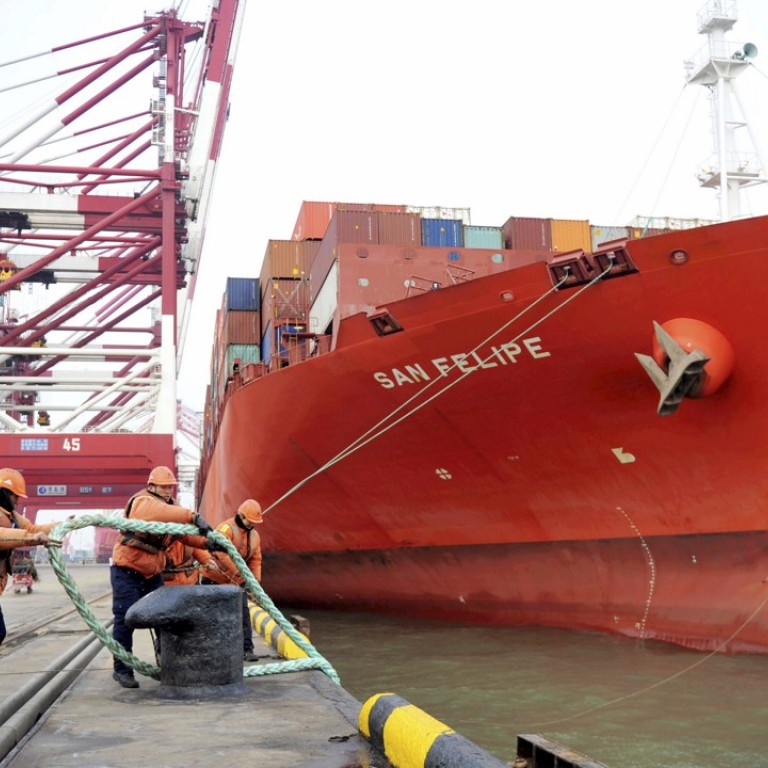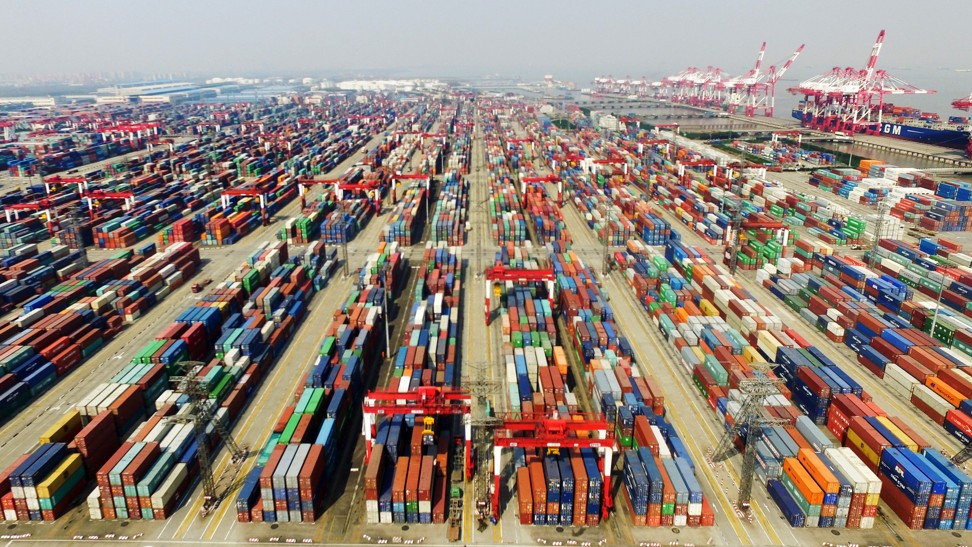
China’s February exports jump 44.5pc despite trade tensions, imports up 6.3pc
Low base from last year and falling yuan contributed to monthly surge, analyst says, as trade surplus widens to US$33.74 billion
China’s exports unexpectedly in February rose at their fastest rate in three years, suggesting the country’s economic growth remains resilient even as trade relations with the United States rapidly deteriorate.
Trade tensions have jumped to the top of the list of risks facing China this year, with proposed US tariffs on steel and aluminium imports suggesting more measures may be on the way, Zhou Hao, senior emerging markets economist at Commerzbank, said at the Reuters Global Markets Forum this week.
China’s February exports rose 44.5 per cent from a year earlier, compared with analysts’ median forecast of a 13.6 per cent increase, and an 11.1 per cent gain in January, according to official figures released on Thursday.
Imports in the month grew 6.3 per cent, the General Administration of Customs said, missing analysts’ forecast of 9.7 per cent growth, and down from a sharper-than-expected 36.9 per cent jump in January.
Analysts said Chinese data early in the year can be heavily distorted by the timing of the Lunar New Year holiday, which fell in February this year but in January in 2017.
But combined January-February trade data also showed a dramatic acceleration in export growth.
Foreign shipments in the two months combined rose 24.4 per cent year on year, much better than the 10.8 per cent recorded in December and 4 per cent for January-February last year.
The government releases combined data for the first two months in an attempt to smooth out seasonal distortions.
The deceleration in import growth in February might be payback for the previous month’s unusual strength, rather than a sign there has been an abrupt weakening in demand.
Robust import growth in January was mostly led by commodities as factories scrambled to restock inventories ahead of the long holiday.
Imports in the first two months of the year rose 21.7 per cent, compared with 4.5 per cent in December.
China’s trade surplus widened to US$33.74 billion for February, compared with forecasts of US$600 million and January’s US$20.35 billion.
For January-February combined, the surplus rose 43.6 per cent from the same period of 2017 to US$54.32 billion.
Boosted by a global trade boom in 2017, China’s exports grew at their fastest pace since 2013 and served as one of the key drivers behind the economy’s forecast-beating 6.9 per cent expansion last year.
But tough US trade talk last year is now turning into action.
“The low base last year and a falling yuan in February both contributed to the surge,” said Yao Shaohua, an economist at ABCI Securities Co in Hong Kong who had the closest yuan exports forecast. The actual reading exceeded all estimates. Yao said he expected a 3 per cent growth in China’s exports this year, but “a trade war with the US will impose a drop”.
President Donald Trump is expected to sign a proclamation on Thursday or Friday to establish the steel and aluminium tariffs, to counter cheap imports, especially from China, though close US allies might get exemptions.
The measures are expected to go into effect in two months’ time, but economists see little immediate impact on China.
It ha already reduced steel exports to the US to a trickle, and while aluminium shipments accounted for about 10 per cent of its total global exports of the metal, the number was still small compared with China’s total exports, according to ING economist Iris Pang.
“All in all, the direct impact on China is minimal,” she said in a note published on Thursday.
Over time, however, any additional punitive US measures and retaliations by China or its other major trading partners would reduce global trade flows, disrupt international supply chains and drag on global growth.
US plans to combat intellectual property theft, which are believed to be moving quickly through the pipeline, could also have a more significant impact on China’s exporters, particularly in hi-tech, high-value industries.
Net exports contributed 9.1 per cent of China’s GDP growth last year.
China’s Foreign Minister Wang Yi said on Thursday that China would make a necessary response in the event of a trade war with the United States but said such a war would only harm all sides.
Speaking on the sidelines of an annual meeting of China’s parliament, he said China had no intention of displacing the United States and that the two countries did not have to be rivals but should strive to be partners.
Additional reporting by Bloomberg


